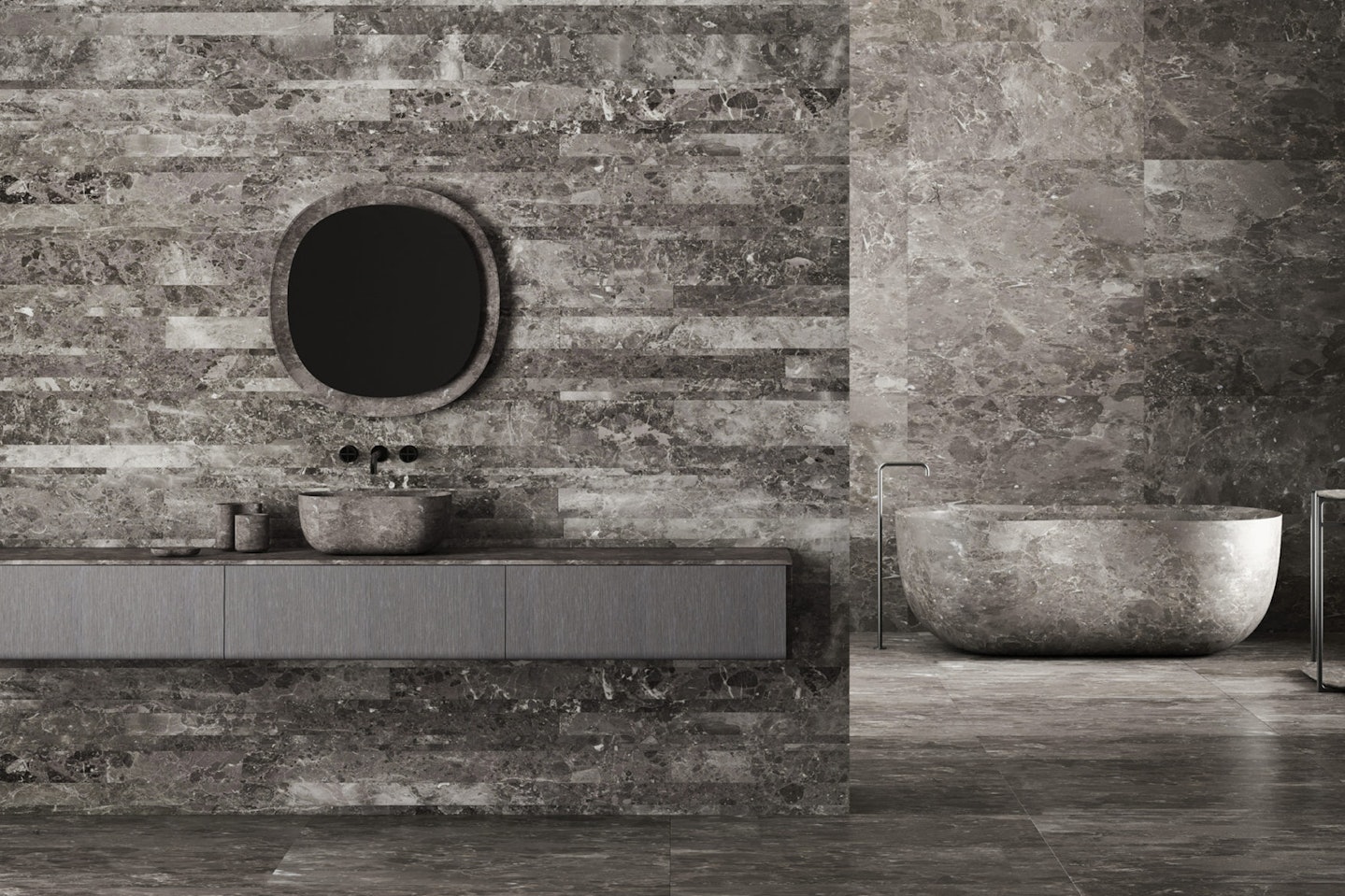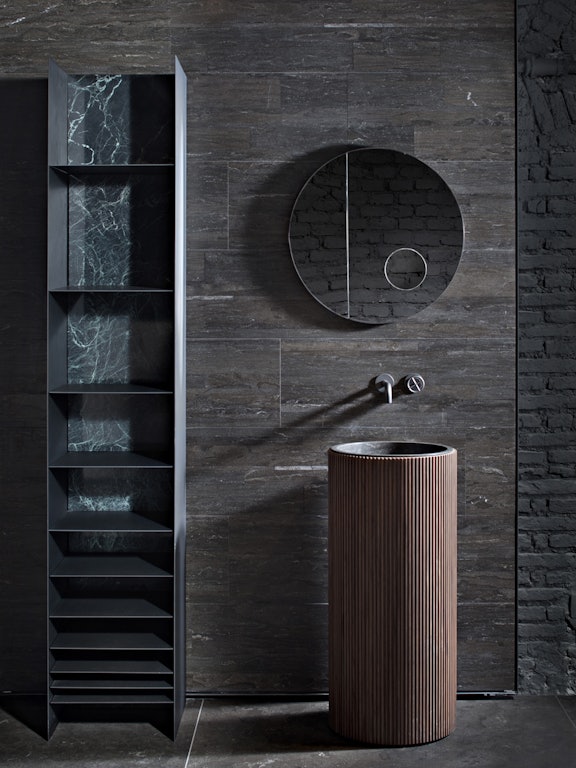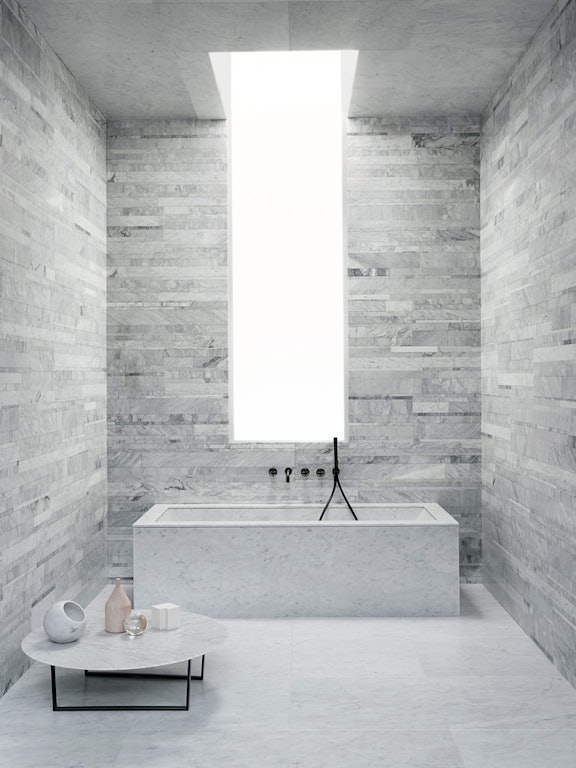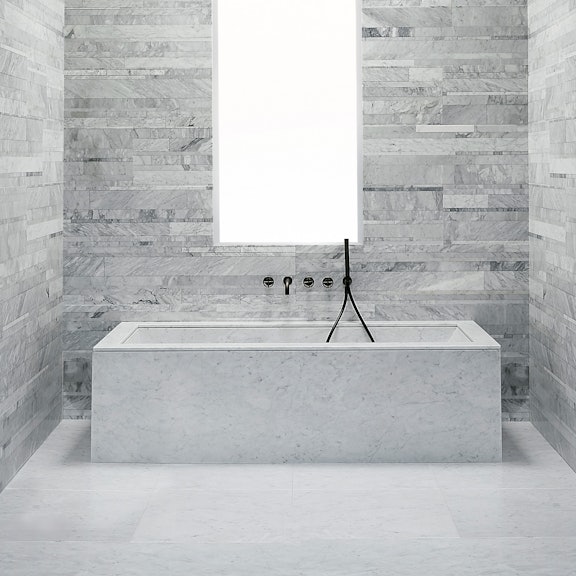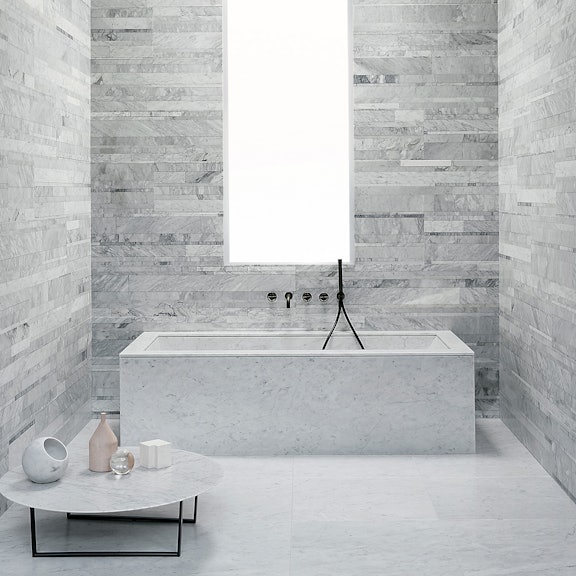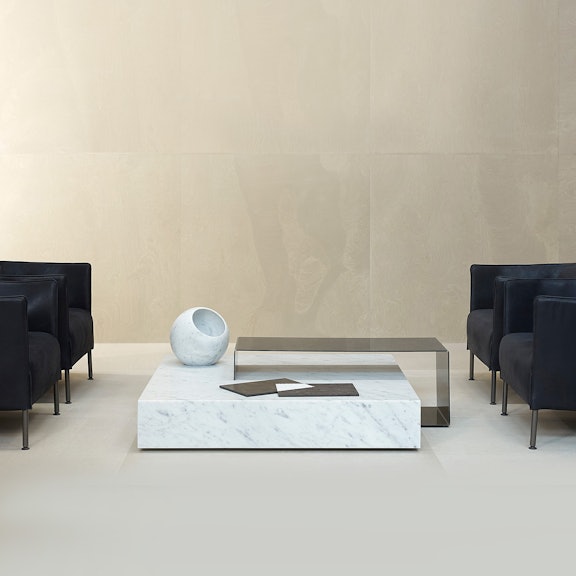The story behind Lithoverde®
03.2022
Lithoverde® helps the environment
A conversation with Gabriele Salvatori
What is Lithoverde®?
Lithoverde® is a texture 99% composed of offcuts of natural stone, with the remaining 1% a natural soy-based resin that binds the pieces together. The result is a sustainable product that not only plays a part in reducing environmental impact, but is technically robust and does not compromise on aesthetics.
How did the idea for Lithoverde® come about?
The reality is that we had a big architectural firm in New York which really wanted to use our products, but they couldn’t because they needed to attain a certain number of LEED points to comply with the sustainability requirements of their project which they could get by using Kilometre Zero stone. We’d been doing things like recycling water for years to help do our bit, but I hadn’t thought about applying the same principle to stone. But this got me thinking and I started looking around our yard with fresh eyes, and then realised the answer was staring me in the face with the offcuts sitting around. So simple really! As the best things generally are.
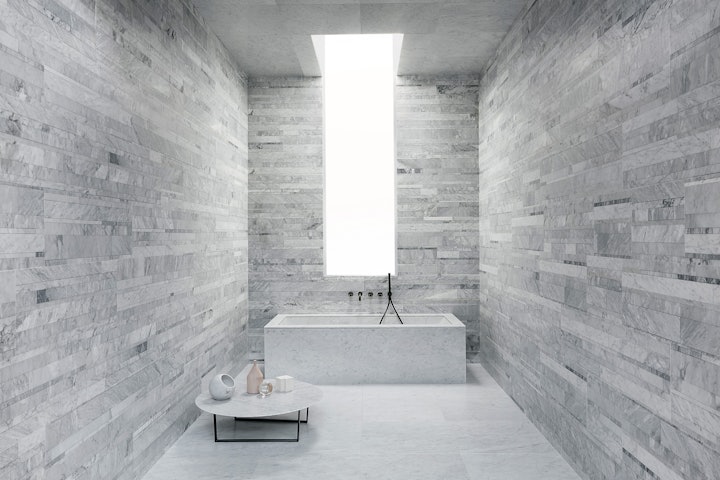
How was the process of refining it to make it into a commercially viable product?
It took a lot of experimentation. We started by laying offcuts out on a tray and creating a single slab, then once we got that more or less right we decided to see if we could create a block. The big challenge was finding the right material to bind the pieces together, as we were determined that this too would be eco-friendly. It took a while, but we got there and now Lithoverde® is 99% made of recycled stone and that final 1% is a soy-based resin.
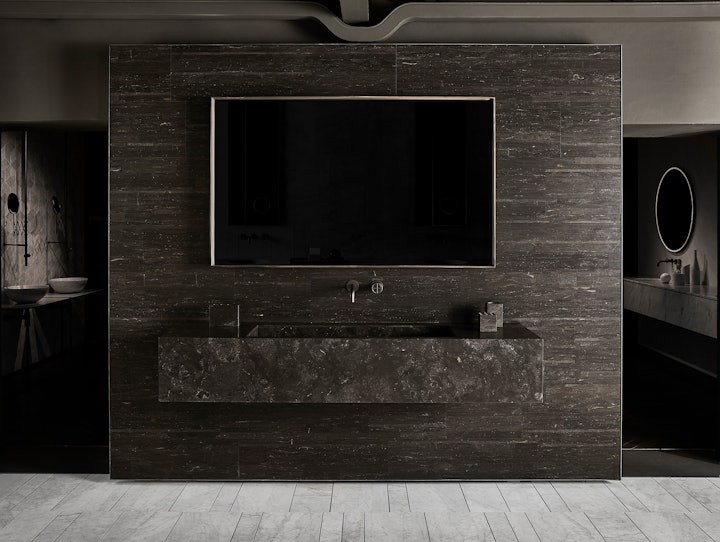
How easy was it to get recognition that it was a product which contributes to conserving the environment?
It’s never easy to be an innovator! We had to jump through a lot of hoops, which of course is correct, otherwise it would be too easy to claim that such and such product is environmentally friendly. It was a long and detailed process to get SDA certification, which is the most widely recognised, but we did it, repeating the process every year for almost a decade. And Lithoverde® also contributes LEED points which is where it all began!
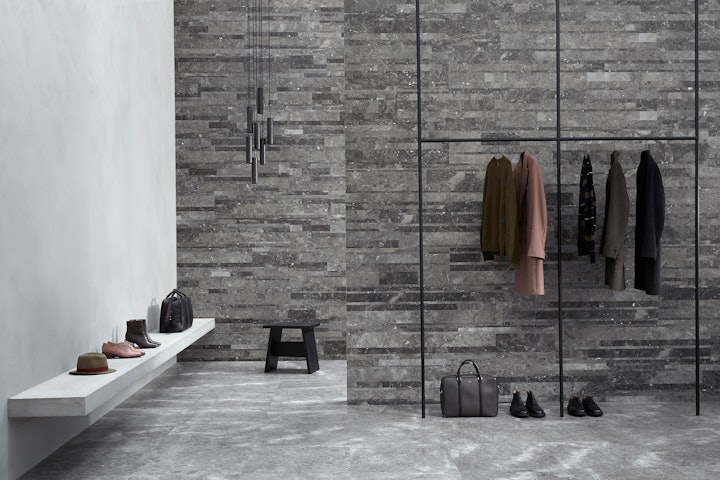
How quickly did the world of architects and construction discover it and adopt it?
We were extremely lucky here. John Pawson heard about it very early on and completely “got” what it meant and also fell in love with it aesthetically. He used it for his House of Stone at the 2010 Milan Design Fair and that created a fantastic launching pad for Lithoverde®. It was written about in magazines around the world. So actually, it gained traction pretty quickly.
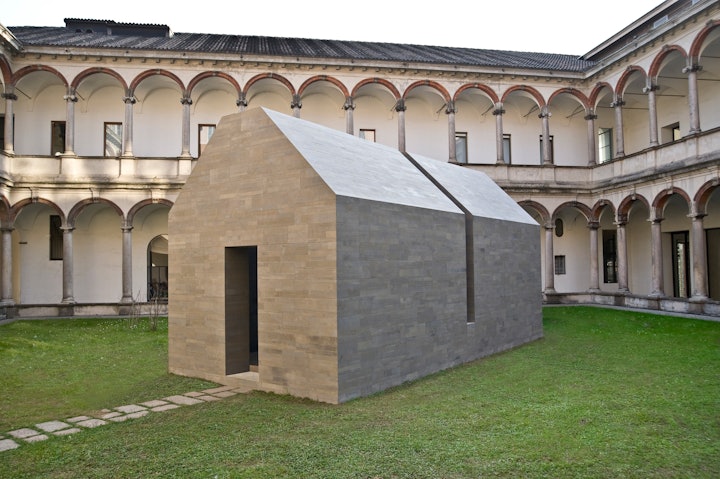
What are the main advantages of Lithoverde® in terms of sustainability?
Every year thousands of tonnes of offcuts of natural stone are simply thrown away. With Lithoverde® we’ve found a way to reuse a good part of these offcuts. In fact, for many years now we also purchase offcuts from other companies to keep up with demand. We are talking about beautiful stone and I’m extremely proud that we’ve found a way to give it a “second life”.
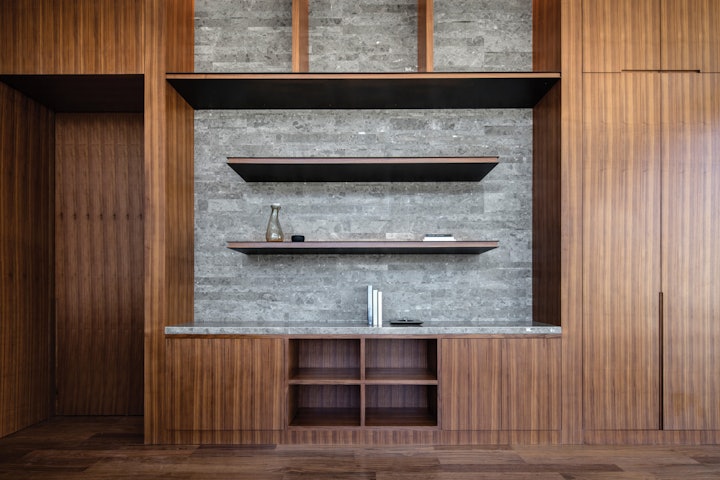
Does the fact that it’s made from offcuts make it less costly than your other stone products?
We’re often asked that, and the truth is that it’s not, because of the amount of work that goes into creating Lithoverde®. Every block is built entirely by hand. There is no mechanical aspect to it at all. And of course, every single block is unique because it mixes stone from different quarries, different regions, even different countries!
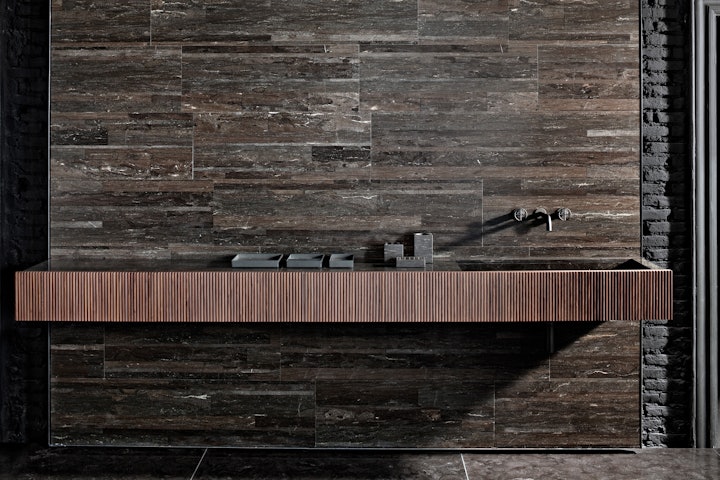
How does Lithoverde® and its sustainability story sit with the fact that natural stone comes from excavating mountains?
Of course we are very aware that our mountains are precious resources and it used to bother me. In fact for a while I really believed I was in the wrong business, because I wasn’t doing anything to help the environment. But then, I came to realise that compared with materials most frequently used in architecture, stone was actually far more sustainable, and once we invented Lithoverde and found a way to reuse offcuts, this became even truer.
It’s also part of our approach to developing our stone textures because the idea is that you don’t need an entire room in stone, but maybe just a feature wall to create a great aesthetic.
